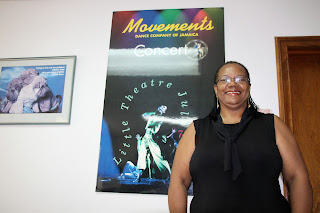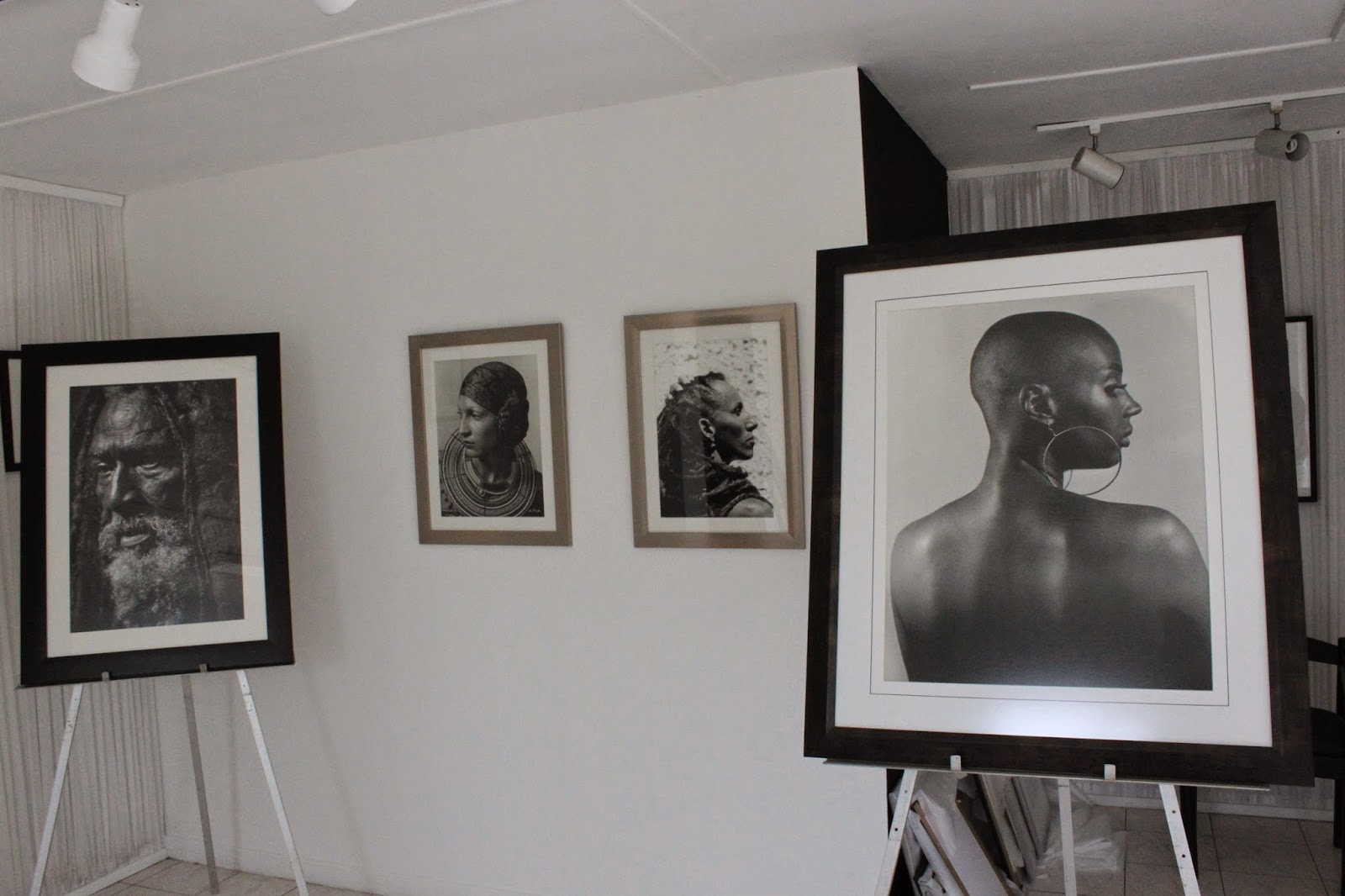Dance: A Living Art Form
Published September 16, 2012
Sunday Gleaner
“Dance, when you're broken open. Dance, if you've torn the bandage off. Dance in the middle of the fighting. Dance in your blood. Dance when you're perfectly free," said Rumi, Persian poet, jurist, theologian, and Sufi mystic.
 Transcending boundaries, centuries fast forward, Monica Campbell McFarlane, artistic director of Movements Dance Company of Jamaica, is living the emotion to this creative form of expression, weaving the intricacies of dance as a living art form.
Transcending boundaries, centuries fast forward, Monica Campbell McFarlane, artistic director of Movements Dance Company of Jamaica, is living the emotion to this creative form of expression, weaving the intricacies of dance as a living art form.
She explained the various elements through the numerous productions that her dance company has done over the years, combining the eclectic mix of movements, lights and sound to etch an everlasting memory.
MATRIX
"There are so many elements that go into dancing - it is scientific, it can be a crossword puzzle, religious connotations ... . It is a matrix of culture," Campbell McFarlane said. According to her, as the first building block, props and lighting play a critical role in transforming the stage into a moving, living medium of art.
"For Flashback, which delves into AIDS," she said, "the background had flashes of blood that complemented the subject, which were catching the eye of the audience. "They cannot be too gory or over-the-top. We want them (the audience) to appreciate issues that are chilling and soul-wrenching, but not get shocked."
Lighting contributes to the vision, she says. Like an artist, chiselling meticulously to create a sculpture, the arena is transformed by the dancers using their bodies as both canvas and brush, as they are both the artists and art piece.
 The dance movements are complemented by music. "We use music with strong and deep-rooted Jamaican ethos," said Campbell McFarlane. "As ideas are transformed into movements, the beats and the strings give them life and character."
The dance movements are complemented by music. "We use music with strong and deep-rooted Jamaican ethos," said Campbell McFarlane. "As ideas are transformed into movements, the beats and the strings give them life and character."
Movements Dance Company, celebrating 31 years of popularising and showcasing dance, chooses a wide spectrum of themes, ranging from Eucharist, delving into 'pathways' of relationships, to jolting the audience's conscience by highlighting the trauma by accentuating social issues.
"We want to provide an avenue for dance, draw on everything that has made and makes Jamaica great," she said.
Dance over the ages has evolved, diversified and, centuries after Rumi, the core emotion and driver remains love - love which is manifested for God's creations and the creator himself. Cultures across the world have deep-rooted relationships with dance. From the sculptures of dancers in synergy adorning temples in India, to whirling to reach the source of all perfection in Sufi mysticism, each culture has its own unique dance form.
For Campbell McFarlane, the essence of the dance form lies in constant perfection. "It is the work of the best creative minds coming together and contributing to the vision," she says. "Each professional comes with their expertise. They make things first-class and give it their best shot."
A communicator by profession, she believes that "dance is a full-time hobby" for her, and this can be seen as she gesticulates with her arms as she speaks. "Dance as an art form is a medium to lift the spirits and is a medium of communication."
Unlike a piece of art, a framed painting adorning a wall, or a sculpture exemplifying its environs, dance in its form may not have tangible physical presence, but is still immortalised.
"The movements are captured in photographs, videos to be cherished," says the veteran choreographer, dancer and creative artist. "Dance remains in the minds of the audience. At some point of their lives, they can relate a particular piece to something they witness and experience."
amitabh.sharma@hotmail.com
Sunday Gleaner
“Dance, when you're broken open. Dance, if you've torn the bandage off. Dance in the middle of the fighting. Dance in your blood. Dance when you're perfectly free," said Rumi, Persian poet, jurist, theologian, and Sufi mystic.
 Transcending boundaries, centuries fast forward, Monica Campbell McFarlane, artistic director of Movements Dance Company of Jamaica, is living the emotion to this creative form of expression, weaving the intricacies of dance as a living art form.
Transcending boundaries, centuries fast forward, Monica Campbell McFarlane, artistic director of Movements Dance Company of Jamaica, is living the emotion to this creative form of expression, weaving the intricacies of dance as a living art form.She explained the various elements through the numerous productions that her dance company has done over the years, combining the eclectic mix of movements, lights and sound to etch an everlasting memory.
MATRIX
"There are so many elements that go into dancing - it is scientific, it can be a crossword puzzle, religious connotations ... . It is a matrix of culture," Campbell McFarlane said. According to her, as the first building block, props and lighting play a critical role in transforming the stage into a moving, living medium of art.
"For Flashback, which delves into AIDS," she said, "the background had flashes of blood that complemented the subject, which were catching the eye of the audience. "They cannot be too gory or over-the-top. We want them (the audience) to appreciate issues that are chilling and soul-wrenching, but not get shocked."
Lighting contributes to the vision, she says. Like an artist, chiselling meticulously to create a sculpture, the arena is transformed by the dancers using their bodies as both canvas and brush, as they are both the artists and art piece.
 The dance movements are complemented by music. "We use music with strong and deep-rooted Jamaican ethos," said Campbell McFarlane. "As ideas are transformed into movements, the beats and the strings give them life and character."
The dance movements are complemented by music. "We use music with strong and deep-rooted Jamaican ethos," said Campbell McFarlane. "As ideas are transformed into movements, the beats and the strings give them life and character."Movements Dance Company, celebrating 31 years of popularising and showcasing dance, chooses a wide spectrum of themes, ranging from Eucharist, delving into 'pathways' of relationships, to jolting the audience's conscience by highlighting the trauma by accentuating social issues.
"We want to provide an avenue for dance, draw on everything that has made and makes Jamaica great," she said.
Dance over the ages has evolved, diversified and, centuries after Rumi, the core emotion and driver remains love - love which is manifested for God's creations and the creator himself. Cultures across the world have deep-rooted relationships with dance. From the sculptures of dancers in synergy adorning temples in India, to whirling to reach the source of all perfection in Sufi mysticism, each culture has its own unique dance form.
For Campbell McFarlane, the essence of the dance form lies in constant perfection. "It is the work of the best creative minds coming together and contributing to the vision," she says. "Each professional comes with their expertise. They make things first-class and give it their best shot."
A communicator by profession, she believes that "dance is a full-time hobby" for her, and this can be seen as she gesticulates with her arms as she speaks. "Dance as an art form is a medium to lift the spirits and is a medium of communication."
Unlike a piece of art, a framed painting adorning a wall, or a sculpture exemplifying its environs, dance in its form may not have tangible physical presence, but is still immortalised.
"The movements are captured in photographs, videos to be cherished," says the veteran choreographer, dancer and creative artist. "Dance remains in the minds of the audience. At some point of their lives, they can relate a particular piece to something they witness and experience."
amitabh.sharma@hotmail.com



Comments
Post a Comment